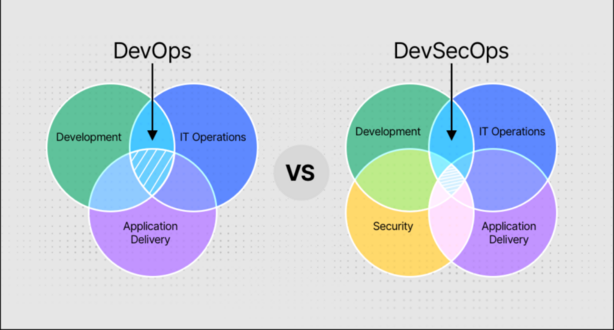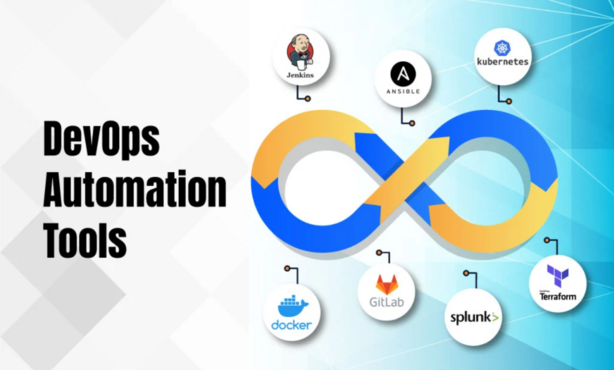How to use DevOps for DevSecOps?

In any software development or DevOps environment, scope management (or descoping) is an essential part of ensuring that the project is delivered on time, within budget, and aligns with business objectives. Descoping involves adjusting the scope of a project—either by removing non-essential features, prioritizing key requirements, or shifting resources—to make sure the development process stays on track without sacrificing quality or user experience.
DevOps plays a significant role in descoping by leveraging its core principles: collaboration, automation, continuous feedback, and continuous delivery. These principles help DevOps teams quickly identify areas of scope that may not align with business goals or technical constraints, allowing them to make adjustments in real time without slowing down the development lifecycle. By embracing DevOps practices, teams can maintain agility and ensure that only the most valuable features make it to production.
This post explores how DevOps practices can be used effectively to manage project scope through descoping, and detailing the tools, strategies, and automation techniques that help streamline the process and optimize project outcomes.
Core DevOps Principles for Managing Scope (Descoping)
To use DevOps effectively for descoping, it’s important to understand the principles that DevOps embodies. These principles help ensure that the development process remains flexible, responsive, and adaptive to the needs of the business and end users. By automating processes, increasing collaboration, and continuously delivering software in smaller increments, DevOps makes it easier to manage project scope.
Key DevOps Principles That Contribute to Descoping:
-
Collaboration and Communication:
-
In DevOps, development, operations, and business teams work closely together. Regular communication across all stakeholders ensures that everyone is aligned with the project’s goals and scope.
-
Collaboration ensures that non-essential features or requirements that don’t contribute to the business goals can be easily identified and removed from the scope.
-
-
Automation:
-
Automation is a core principle of DevOps and can be applied across various stages of the development lifecycle, including testing, deployment, monitoring, and provisioning.
-
By automating processes, DevOps teams can save time, reduce errors, and focus more on delivering core features that align with the business objectives, while removing unnecessary complexity from the scope.
-
-
Continuous Feedback:
-
Continuous feedback from automated tests, monitoring tools, and stakeholders helps identify areas for descoping early in the development cycle.
-
Real-time feedback ensures that teams can adjust the scope based on performance data, user feedback, and business needs, leading to better prioritization of features.
-
-
Incremental Delivery:
-
DevOps emphasizes delivering software in small, iterative releases, which allows teams to make quick adjustments to the scope based on the feedback received from each release.
-
Incremental delivery helps avoid large-scale scope creep and ensures that only the most necessary features are included in the release, while extraneous features can be delayed or removed.
-
-
Transparency and Continuous Monitoring:
-
By continuously monitoring the application and its infrastructure, DevOps teams can gain insights into the system’s behavior and performance, allowing them to identify features or services that should be described.
-
Monitoring tools like Prometheus, Grafana, or New Relic help track metrics such as system uptime, error rates, and user behavior, which provide actionable data for scope refinement.
-

Tools for Automating Descoping in DevOps
Automation is a cornerstone of DevOps practices. By integrating the right tools into the DevOps pipeline, teams can automate repetitive tasks, monitor performance, and adjust the scope as necessary. These tools ensure that the scope remains aligned with project goals and business needs while streamlining workflows and improving efficiency.
Key Tools for Automating Descoping:
-
Jira for Agile Project Management:
-
Jira is a powerful tool for managing project tasks, user stories, and sprints. It helps define and track the scope of the project and allows teams to adjust and prioritize tasks based on business needs.
-
With Jira, DevOps teams can create and manage backlogs, prioritize user stories, and easily identify areas where scope can be refined or removed.
-
-
Jenkins for Continuous Integration (CI) and Deployment (CD):
-
Jenkins automates the building, testing, and deployment of applications, making it easier to integrate new code changes and assess their impact on the project scope.
-
Jenkins helps DevOps teams ensure that only high-priority features are deployed, while non-essential changes can be descoped or delayed.
-
-
Terraform for Infrastructure as Code (IaC):
-
Terraform automates the provisioning and management of cloud resources using code. By defining infrastructure as code, teams can create consistent and scalable environments that support the project’s scope.
-
IaC tools like Terraform allow DevOps teams to easily scale or descale infrastructure based on the requirements of the project, ensuring that resources are allocated efficiently.
-
-
Kubernetes for Container Orchestration:
-
Kubernetes automates the deployment, scaling, and management of containerized applications. By using Kubernetes, DevOps teams can easily manage application components and adjust the scale of features to meet the project scope.
-
Kubernetes also supports rolling updates, which allow DevOps teams to release features gradually, test them in production, and adjust scope as needed.
-
-
Prometheus and Grafana for Monitoring:
-
Prometheus and Grafana are widely used to monitor application performance and system health in real-time. By using these tools, DevOps teams can detect performance bottlenecks or failures early and adjust the scope to address them.
-
Automated monitoring helps identify features that are not performing well or that are unnecessary, providing valuable insights into what can be described.
-
Continuous Delivery and Incremental Releases for Descoping
In DevOps, continuous delivery (CD) ensures that new code changes are automatically tested and deployed to production. This process helps manage the scope by enabling teams to make quick adjustments, release smaller features, and deliver value incrementally. Incremental releases allow DevOps teams to regularly assess project scope and ensure that only necessary features are deployed to production.
How Continuous Delivery Facilitates Descoping:
-
Smaller Releases with Clear Objectives:
-
DevOps teams deliver software in small, manageable increments, making it easier to assess the scope of each release. If a feature is deemed unnecessary or inefficient, it can be removed or postponed.
-
Smaller releases ensure that features can be evaluated, scaled, or descoped based on real-time feedback.
-
-
Feature Flagging:
-
Feature flags allow DevOps teams to deploy code but control its activation in production. This means that features can be tested and evaluated before they are fully rolled out, helping to decide if a feature should remain in the scope or be descoped.
-
Feature flags also allow teams to disable features that are not contributing to the overall goals or performance of the application.
-
-
Rollback Capabilities:
-
Continuous delivery pipelines often include rollback mechanisms, enabling DevOps teams to easily revert to previous versions if a feature exceeds the scope or introduces performance issues.
-
Rollback capabilities reduce the risk of introducing out-of-scope features into production, ensuring the project stays aligned with its intended goals.
-
-
Frequent Testing and Validation:
-
Continuous testing integrated into the CI/CD pipeline ensures that each release meets performance, security, and functionality requirements. This process helps validate the scope of the release and prevents scope creep by catching issues early.
-
Automated testing helps confirm that only critical features make it through the pipeline, while unnecessary features can be removed or postponed.
-
Utilizing User Feedback for Descoping Decisions
User feedback is one of the most valuable inputs for descoping in DevOps. Continuous delivery combined with real-time user feedback ensures that the features being developed meet user needs and expectations. If certain features are not providing value to the users or the business, they can be descoped.
How User Feedback Influences Descoping:
-
Real-Time Feedback Loops:
-
DevOps encourages the integration of user feedback loops into the development process. With monitoring tools and analytics platforms, teams can gather insights about how users interact with features and whether they are delivering value.
-
User behavior analysis helps teams identify features that should be refined, postponed, or removed, based on real-time data.
-
-
A/B Testing:
-
A/B testing allows DevOps teams to test different versions of a feature with a subset of users. This helps identify the most effective features and functionalities while also revealing which features may be redundant or unnecessary.
-
Based on A/B testing results, features that are underperforming can be descoped, reducing the risk of scope creep.
-
-
User-Centric Prioritization:
-
Prioritizing user needs over unnecessary features ensures that the scope remains focused on delivering what matters most to the end-user.
-
DevOps practices such as continuous delivery and automated testing allow for quick adjustments based on user feedback, ensuring that the scope remains adaptable.
-
The Power of DevOps in Effective Descoping
DevOps provides an effective framework for managing and adjusting project scope (descoping) by emphasizing automation, collaboration, and continuous delivery. By integrating DevOps practices into scope management, teams can ensure that only the most valuable features are delivered to users, minimizing waste, and maximizing business value.
With the right tools, automation, and continuous feedback, DevOps enables teams to stay flexible, adaptable, and aligned with both user needs and business objectives. Whether it’s scaling the infrastructure, rolling back features, or adjusting application priorities, DevOps ensures that the scope of the project is always in line with the core goals.
By leveraging the power of DevOps for descoping, teams can ensure that their projects are delivered on time, within budget, and with high-quality outcomes that meet user and business expectations.
The post How to use DevOps for DevSecOps? appeared first on Best DevOps.
Go to Source